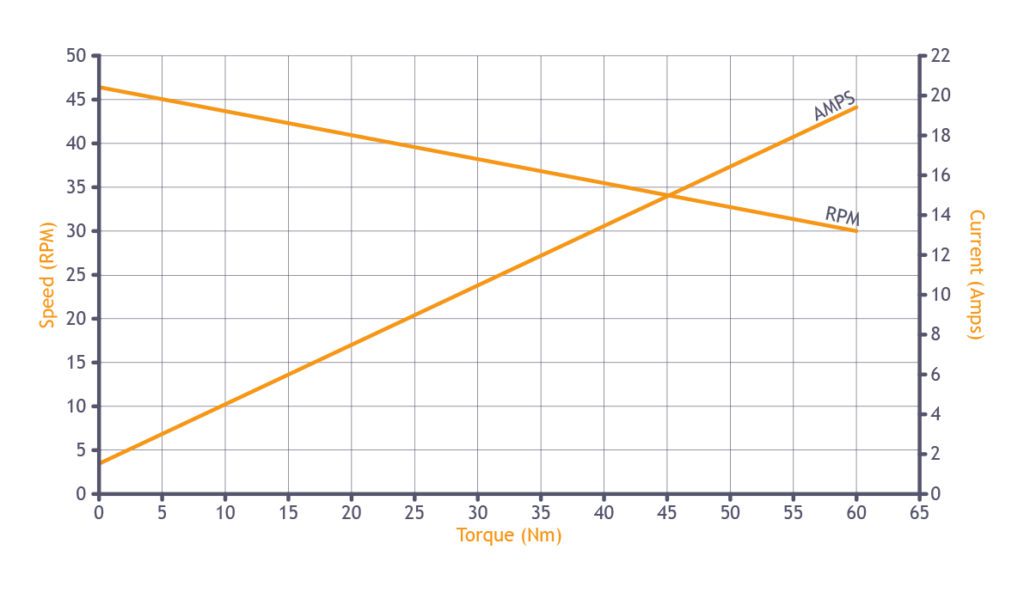Efficiency
When choosing an electric motor, efficiency is an essential factor. Efficiency of both the motor and the gearbox and the combined efficiency is a topic in its own right but essentially normally more than the performance variables need to be included in the selection process.
Parvalux has great experience in comparing the different motor and gearbox technologies and assessing the trade-off between them in a given application. Parvalux’s experience in supplying many industries is unprecedented and quickly allows discussions on the correct technology for the application. For OEMs requiring large volumes, ‘technology rigs’ can be constructed using different technologies to empirically compare data in the application, but many non-performance variables inevitably need to be added to the selection process when seeking ultimate efficiencies (costs, marketing benefits, system complexity etc).
A very simplified example of the ‘trade-offs’ when considering efficiency is displayed in a battery operated winch example in the table shown.
| Technology Type |
PMDC Motor & Worm Wheel Gearbox |
|
Pros |
Cons |
|
Simple components |
Lower efficiency |
|
Many ratios won’t back-drive |
|
|
Simple controller |
|
|
Simple maintenance |
|
|
Low cost |
|
|
|
|
| Technology Type |
Brushless Motor & Epicyclic Gearbox |
|
Pros |
Cons |
|
Higher efficiency |
Complex components |
|
Extended battery life |
Electronic controller |
|
Quiet |
May back-drive |
|
|
May need brake |
|
|
Greater cost |
This example is certainly subjective, written in context to a battery-operated winch and not exhaustive, but demonstrates other factors when considering efficiency. There are also only two technology combinations considered although many other motor/gearbox technology combinations could be compared. When comparing technology groups for ultimate efficiency you may wish to select a brushless motor with epicyclic gearbox, which, in general, would give you the best efficiency but at additional cost and complexity. For example, a winch may need to self-sustain (not move when the power is off but the load is still applied) which a worm-wheel gearbox can achieve due to its inefficiencies.
The epicyclic gearbox may well not self-sustain due to its increased efficiency, therefore requiring extra items such as a mechanical brake and all the control complexities that go with it. The cost of the additional brake, its control, along with the PWM controller for the brushless motor, can be considerable when compared to the simplicity of a permanent DC motor & worm wheel gearbox. Parvalux’s experience with the many technologies we can offer will save you time when choosing an electric motor and gearbox technology for your application.
